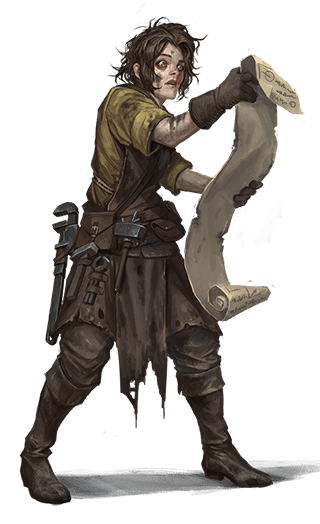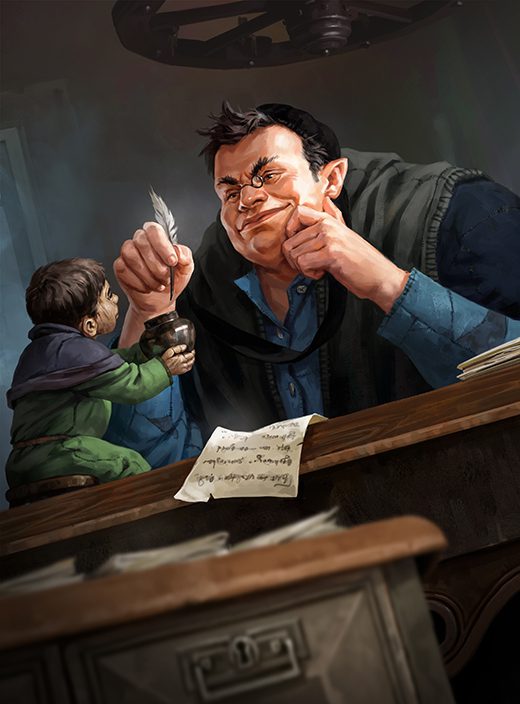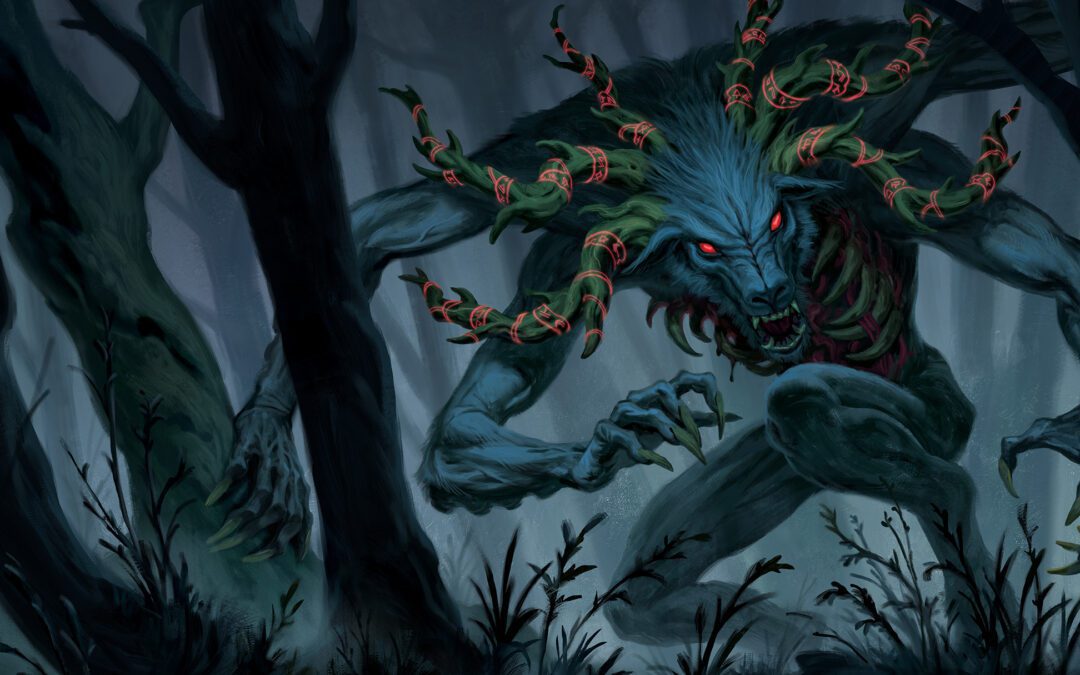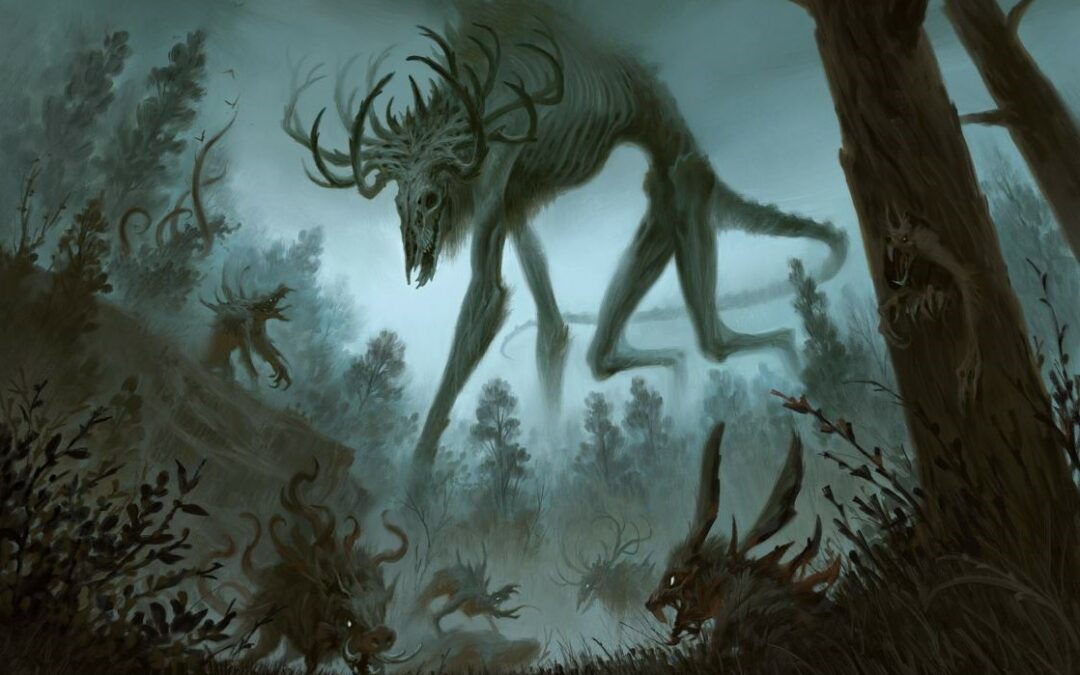
Welcome adventurer to part two of the Running Adventure Modules blog series. Over the course of five articles, we’re covering all the tips and tricks a busy GM needs to run pre-written adventure modules with little to no prep time!
In this article we’re going to cover how to maximize your module prep time by taking efficient notes. It might seem counterintuitive to add another step to the prep process when you are already on limited time, but trust me, all you need is 10 minutes to create all the notes you need to make your life easier.
Why Take Notes?
You might be wondering why you need to take notes when using an adventure module to run an adventure. After all, you have so many words already there on the page written out for you, right?
It may seem redundant to take a bunch of writing and make more writing. But let’s face it, in the heat of the moment it’s hard to focus on pulling information quickly out of long blocks of text inside an open book amidst all the other moving parts of running a game session. At the game table it’s difficult to remember specific details and subtle clues you wanted to weave in, so notes are incredibly helpful!
Modules in their raw form are not the most helpful tool during a session. They require work ahead of time to make them more useful at the game table. Luckily, with a little effort you can make modules work better for you by compiling the information you need to know into a more accessible format.
Notetaking Tips:
- When possible, print out the module, or load it on a PDF reader and highlight the important pieces of information.
- If you have the cash, invest in some colorful tools to make notetaking more fun. This can be anything from buying neon flags to mark pages of your module or spend some bucks on some neat widgets to make your notes page more functional.
- If you can digitize your notes, you should do it. Using note taking software that can link up to your phone, computers, and tablets is a guaranteed way to make sure you can do prep work anywhere/anytime. While writing on paper feels attractive, it is simply no longer the most practical way for the busy GM to prep.
- If your notes are digital, learn to love hyperlinks. Embedding links to the information you need is an incredible way to save time because it dramatically reduces the amount of content you need to copy.
- If your notes are physical, make sure to keep them all in the same place and never change that place. Scattering notes through different notebooks, sticky notes, etc. is a surefire way to lose what you need, and you’ll have to do double work.
- Before you take any notes, make a firm decision about the amount of time you want the session to be (I suggest no more than three hours of actual game time). Sticking to a time limit ensures you only spend time prepping (and notetaking) the exact amount you need to.
All You Need Is One Page

Artist: Klaher Baklaher
You heard me right. All you need to run a successful session (from a module or not) is one page of notes. If you have more notes than can fit on one single-sided 8.5 x 11-inch piece of paper, you are likely creating too much work for yourself. Free yourself from the scrawling stacks of notes, they are just as useless at the table as bringing the whole raw module.
Notes should not contain information reprinted from other sources. They should only have a map of information found elsewhere to help trigger your memory in moments when the pressure is on. Because notes are a key to memory, they are hyper-specific to the person who creates them. For example, my GM notes work great for me but would likely be incredibly unhelpful for someone else. Everyone’s notes are different, and it does absolutely take time to learn what kind of notes work best for you.
There is no right or wrong way to take notes, but trust me, you do not need to take copious pages of notes to be successful. As you run more games, and get more used to notetaking, I guarantee you’ll find yourself whittling down those sections you once thought you needed.
Strive for a goal of one-side of one page. One sheet of paper is really manageable when you have a bunch of sourcebooks to reference or tons of tabs already open. If you take lots and lots of notes while brainstorming for your game, consider taking an extra ten minutes to condense the things you need to know onto one page for quick reference.
Most GMs are surprised to find that they have no time or use for pages and pages of super-descriptive notes.
What to Include in Your Notes
Hopefully, I’ve sold you on the virtues of one page of notes. So now, let’s get down to the nitty gritty. What do you actually need to include in your notes? As I mentioned previously, every GM’s notes are ultimately going to look different depending on how their brain works. But the good news is that most notes include the same general categories. So, without further ado, here are some things you likely want to include in your notes.
Note: The extra good news is that several of these items can be added to your notes while you are reading through your module using the process explained in the first article of this series.
Scene Timeline
If your module didn’t have a top level ‘adventure flow’ on the first few pages (or if the flow was too broad to cover session by session), do yourself a favor and create a scene timeline! Flip through the module and take the time to write out bullet points for each scene that is likely to occur during the session. You can think of these as acts of a play or a musician’s setlist. Having a general timeline to refer to helps you stay on track with the encounters you have prepared and key events critical to advancing the module plot.
Note: Remember that this timeline shouldn’t be too specific since you might have to skip or reorder scenes on the fly if your players throw you a curveball.

Artist: Svetlana Kostina
NPCs
Creating a key of NPCs who are likely to show up in the session can be incredibly helpful for remembering things in the moment. Make sure to write down their names, a couple descriptive words to help you remember what they look like, and notes on the way they speak so you can quickly recall how you portray their voice.
Locations
Like NPCs, listing the names of locations that might appear in the session alongside a couple descriptive phrases can help you create seamless transitions between locations described in the module.
Clues
If your players are going to discover something new about the world or a piece of information critical to the plot of the adventure, make sure to write it down! Just taking the time to write out this information can help you figure out how to present it in a concise, understandable, and thematic way.
Reference Page Numbers
If you are using monsters or any other elements from sourcebooks, write down the book titles and page numbers in your notes so you can quickly find the information you need during the game. If your notes are digital, include hyperlinks.
Player Character Notes
If you plan to have a special moment, reward, or something else specific to one character happen during a session, make sure to write it down (and maybe even highlight it). It’s important to sprinkle moments through your games that make each character feel special, especially when running a module. So search for opportunities like this, and don’t forget to make them happen!
It can be easy to forget to engage with individual characters while you’re struggling to get through a pre-written story, so set yourself up for success by thinking about such opportunities ahead of time.
And those cover all the basics! Of course, you might find other details that are helpful to keep on your one-page. But if you cover the basics listed above, you’ll be in stellar shape to run your session!

![Grim Hollow: The Player's Guide [PDF]](https://b2358178.smushcdn.com/2358178/wp-content/uploads/2021/02/Grim-Hollow-players-Guide-PDF-600x600.jpg?lossy=1&strip=1&webp=1)


0 Comments